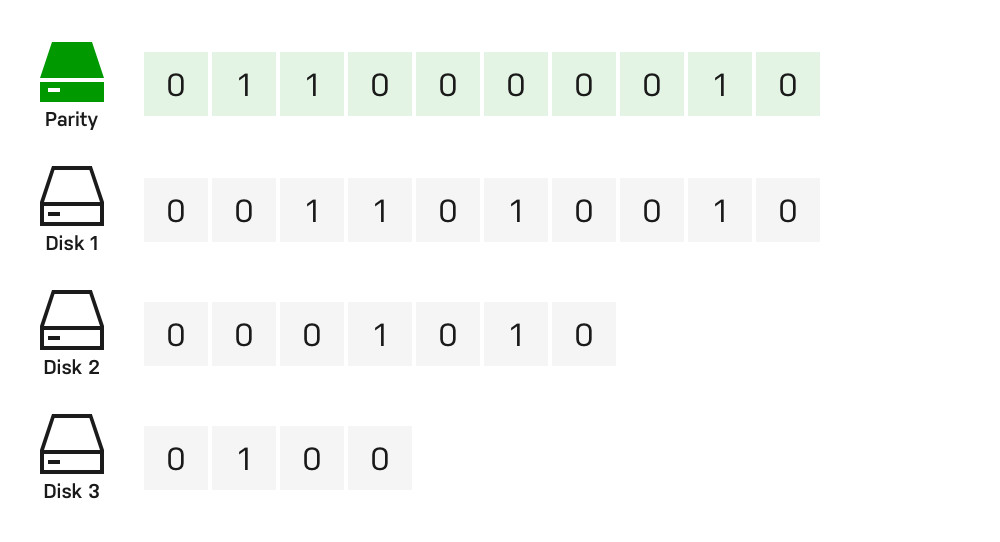In today’s digital landscape, the need for efficient and scalable storage solutions is greater than ever. Network-Attached Storage (NAS) has emerged as a popular solution, and within the NAS ecosystem, UnRAID stands out as a uniquely versatile operating system. While users often consider pre-built NAS solutions from brands like Synology or QNAP, or delve into fully open-source options like TrueNAS, UnRAID presents a compelling middle ground, offering a blend of user-friendliness and powerful customization. This article dives deep into the core advantages of an UnRAID server, highlighting why it might be the ideal choice for your data storage needs.
 UnRAID OS Background
UnRAID OS Background
Unmatched Flexibility in Hardware and File Systems
One of the most significant advantages of UnRAID is its exceptional flexibility, particularly when it comes to hardware compatibility. Unlike systems like TrueNAS and Synology that often dictate specific hardware requirements, UnRAID breaks free from these constraints. You can install UnRAID on a vast range of hardware, from repurposed desktop PCs to robust server-grade machines. This adaptability allows you to build an UnRAID server using components that perfectly match your performance needs and budget. Whether you’re starting with existing hardware or hand-picking new components, UnRAID accommodates your choices.
Furthermore, UnRAID extends this flexibility to file systems. It supports a diverse range including Btrfs, XFS, and EXT4, empowering you to select the file system best suited for your specific applications and data types. This contrasts with more restrictive systems that limit your file system options. This freedom of choice ensures optimal performance and compatibility for your unique storage requirements.
Intuitive User Interface and Ease of Use
Navigating complex server software can be daunting, but UnRAID prioritizes user-friendliness with its intuitive web-based interface. Managing your NAS system becomes straightforward, even for users without extensive technical expertise. This ease of use is a major advantage, especially for home users, small businesses, or anyone who prefers a hassle-free experience. While other NAS solutions also offer web interfaces, UnRAID’s design is often praised for its simplicity and clear layout, making NAS management accessible to a wider audience.
 UnRAID Diagram illustrating parity calculation
UnRAID Diagram illustrating parity calculation
Scalability and Incremental Storage Expansion
Scalability is a critical factor for any growing storage solution, and UnRAID excels in this area. Its unique parity-based storage system allows for incredibly flexible expansion. Unlike traditional RAID configurations that often require drives of identical sizes and necessitate complex array rebuilds for expansion, UnRAID lets you add drives of varying sizes to your array without data loss or cumbersome procedures. This means you can grow your storage capacity incrementally as your needs evolve, avoiding the upfront cost of large, high-capacity drives.
This approach to scalability is a significant advantage over more rigid RAID systems found in TrueNAS and Synology. Expanding storage in those systems can be time-consuming, resource-intensive, and often requires significant upfront investment. UnRAID’s flexible expansion capabilities offer a more cost-effective and manageable path to growing your storage over time.
 UnRAID parity write data visualization
UnRAID parity write data visualization
Powerful Virtualization and Containerization Capabilities
Beyond its storage prowess, UnRAID shines as a versatile server platform due to its native support for Docker containers and virtual machines (VMs). This powerful feature set allows you to run a wide range of applications and even entire operating systems alongside your storage array, all on the same hardware. Whether you want to host media servers, game servers, home automation platforms, or test different operating systems, UnRAID’s virtualization and containerization capabilities provide the tools to do so without requiring separate hardware.
While other NAS operating systems offer some level of container and VM support, UnRAID’s implementation is known for its robustness and seamless integration. This makes it an excellent choice for users who want a multi-functional server that handles both storage and application hosting efficiently.
Cost-Effectiveness and Long-Term Savings
Considering the combined advantages of flexibility, ease of use, scalability, and virtualization, UnRAID often emerges as a highly cost-effective solution compared to alternatives like TrueNAS and Synology. Its ability to utilize a wide range of hardware, including potentially reusing existing components, and its incremental storage expansion capabilities contribute to significant cost savings, both initially and over the long term. You avoid vendor lock-in and the need for costly hardware upgrades dictated by specific platform requirements. While UnRAID itself requires a software license, the overall cost of ownership can be substantially lower due to its hardware flexibility and efficient storage management.
Conclusion: Why Choose an UnRAID Server?
In conclusion, the advantages of an UnRAID server are compelling for a wide range of users. Its unparalleled flexibility in hardware and file systems, combined with its user-friendly interface and exceptional scalability, make it a standout NAS operating system. The powerful virtualization and containerization features further enhance its versatility, transforming it into a multi-purpose server solution. While it’s important to consider potential performance limitations and the absence of certain enterprise-level features (as discussed in the original article), for home users, enthusiasts, and small businesses seeking a flexible, scalable, and cost-effective storage and server solution, UnRAID presents a highly attractive and advantageous option. Ultimately, the decision of whether UnRAID is right for you depends on your specific needs and priorities, but its numerous benefits make it a strong contender in the NAS landscape.
UnRAID Key Advantages:
- Flexible Storage Configuration: Mix and match drive sizes and types within the array.
- Data Protection with Parity: Unique parity protection scheme ensures data redundancy.
- Excellent Docker Support: Easily run and manage containerized applications.
- Virtualization Capabilities: Create and manage virtual machines using KVM.
- User-Friendly Web Interface: Simple and intuitive NAS management.
- Active Community Support: Vibrant community for support and plugins.
- Cost-Effective Solution: Lower overall cost due to hardware flexibility and scalability.
- ZFS Support: Recent addition of ZFS support expands file system options.

